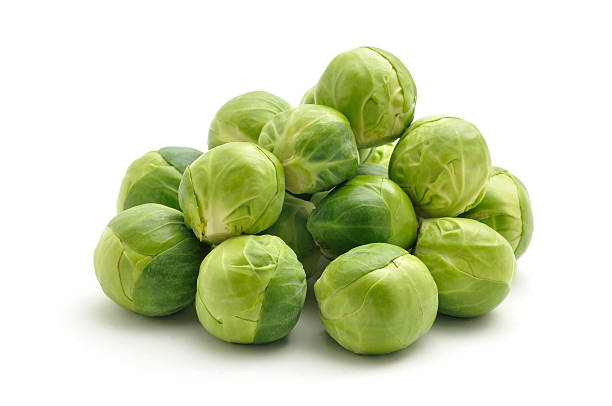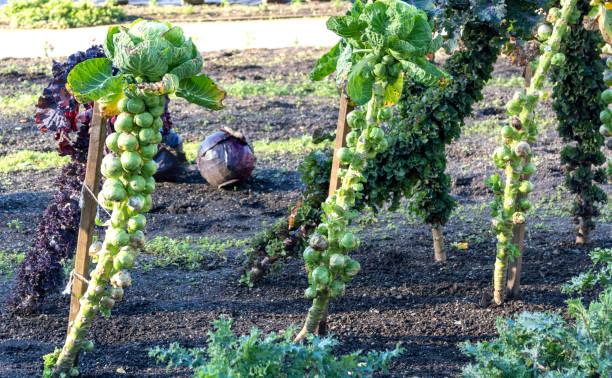
Welcome to our comprehensive guide on how to grow brussels sprouts and achieve a bountiful harvest of these nutritious and versatile vegetables. Whether you’re a seasoned gardener or a beginner, this article will provide you with valuable insights and practical tips to ensure a successful brussels sprouts cultivation experience. From planting to harvesting, we’ll cover every step of the process to help you enjoy a delicious supply of homegrown brussels sprouts throughout the cooler months. Let’s dive in!
The Health Benefits of Brussels Sprouts
Before we delve into the specifics of growing Brussels sprouts, let’s take a moment to appreciate the incredible health benefits these green gems offer. Bursting with fiber, vitamin K, and vitamin C, brussels sprouts are a powerhouse of nutrients. Incorporating them into your diet can improve digestion, strengthen bones, and enhance immune function. With their versatility in cooking methods, you can roast, boil, steam, fry, or even enjoy them raw in salads for a delightful and nutritious culinary experience.
Choosing the Right Time to Plant Brussels Sprouts

Timing is crucial when it comes to planting brussels sprouts for optimal growth and flavor. While they are cool-weather crops, it’s essential to strike a balance between avoiding the bitter taste associated with mature sprouts during hot months and ensuring a robust harvest in colder weather.
Ideal Planting Time: According to the experts at Bonnie Plants, brussels sprouts should be started early in the spring or in mid to late summer for a late fall harvest. This timing allows for a succession of crops throughout the year, ensuring a steady supply of brussels sprouts for your table.
Climatic Considerations: While the “fog belt” of the Pacific Northwest offers the ideal climate for brussels sprouts, these plants can thrive successfully in various regions once their specific requirements are met. In fact, exposure to a few frosts can even enhance the flavor of the sprouts, as explained by Leona Bergman of Cedar Circle Farm and Education Center based in Vermont.
Preparing Your Soil and Choosing the Right Location
Now that you know when to plant brussels sprouts, let’s focus on creating the optimal growing conditions for these vegetables. Here are some key considerations for preparing your soil and selecting an ideal location:
Well-Draining Soil: Brussels sprouts thrive in well-draining soil, ensuring that excess moisture doesn’t impede their growth. It’s advisable to avoid waterlogged areas to prevent potential issues like root rot.
Sunlight Requirements: Brussels sprouts require a minimum of six hours of sunlight per day for healthy development. When choosing a location, opt for a sunny spot in your garden that receives ample sunlight.
Nutrient Requirements: Interestingly, brussels sprouts don’t demand excessive nutrients from the soil. This characteristic makes them an excellent choice for beginner gardeners. You won’t need to add additional soil improvers to your homemade compost before planting, as long as you ensure a well-balanced soil composition.
Planting Brussels Sprouts: Step-by-Step Guide

To ensure successful growth and a bountiful harvest, it’s essential to follow the correct planting procedures for brussels sprouts. Here’s a step-by-step guide to help you get started:
- Seed Starting: Begin by starting your brussels sprout seeds indoors, usually in early April. This allows for optimal germination and ensures healthy seedlings ready for transplantation. However, the precise timing may vary depending on your climate. For example, in colder areas, it might be necessary to start seeds indoors as early as February.
- Transplantation: Once the seedlings have developed sufficient strength, it’s time to transplant them into your garden. Mid-May is generally an appropriate timeframe for transplanting brussels sprouts in many climates. Ensure a spacing of approximately 18-24 inches between each plant to allow ample room for growth.
- Watering and Maintenance: Regular watering is crucial for brussels sprouts, particularly during dry spells. Consistent moisture levels contribute to optimal growth and prevent stress-induced issues. Additionally, staking the plants will provide necessary support and prevent them from toppling over. Remove any yellowing leaves promptly to maintain the plant’s overall health.
- Succession Planting: To extend your harvest and enjoy brussels sprouts over an extended period, consider sowing a succession of sprout varieties. This practice ensures a continuous supply of delicious sprouts throughout the season, enhancing your culinary adventures.
The Growing Cycle of Brussels Sprouts
It’s important to understand the duration and lifecycle of brussels sprouts to plan your gardening activities effectively. Here’s an overview of the growing cycle:
- Seed to Harvest: Brussels sprouts have a relatively long growing season, usually spanning around 85 to 100 days from seed to harvest. Patience is key when cultivating these vegetables, as they require time to develop their signature flavor and texture.
- Overwintering: One of the remarkable qualities of brussels sprouts is their ability to tolerate colder weather. In fact, they can be overwintered in your home vegetable garden. By mulching around the stem as the weather cools, you can protect the plants from frost and enjoy fresh sprouts all through the winter and into early spring the following year.
Tips for Growing Brussels Sprouts Successfully

To ensure a successful brussels sprouts harvest, here are a few additional tips to keep in mind:
- Optimal Temperature: Brussels sprouts thrive in cooler temperatures, so it’s crucial to time your sowing to coincide with the desired growing conditions. If possible, expose the plants to a frost, as this enhances their flavor and improves overall growth.
- Yellowing Leaves: While some gardeners recommend removing the lower leaves of brussels sprout plants to promote better crops, this practice is not essential for home kitchen gardens. If you do choose to remove some lower leaves, ensure that several of the largest, healthiest, fully expanded upper leaves remain intact to continue nourishing the plant.
Companion Plants for Brussels Sprouts
Companion planting is an effective strategy for maximizing space and creating mutually beneficial plant environments. When cultivating brussels sprouts, consider planting them alongside these compatible companions:
- Beets
- Onions
- Peas
- Celery
- Lettuce
- Potatoes
- Carrots
These plants can coexist harmoniously, enhancing each other’s growth and warding off potential pests.
Conclusion
Congratulations! You’ve now become well-versed in the art of growing brussels sprouts. With the knowledge gained from this comprehensive guide, you’re equipped to embark on a successful brussels sprouts cultivation journey. Remember to plan your planting time wisely, select an appropriate location, and provide the necessary care to ensure your plants thrive. By following these guidelines, you’ll soon be savoring the fruits of your labor—a bountiful harvest of delicious brussels sprouts packed with essential nutrients. Happy gardening!






